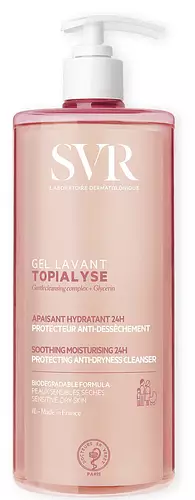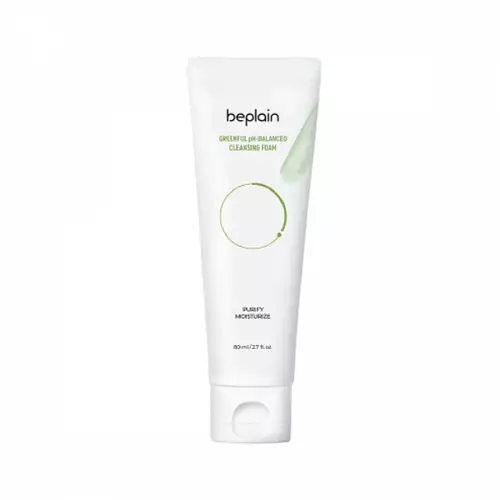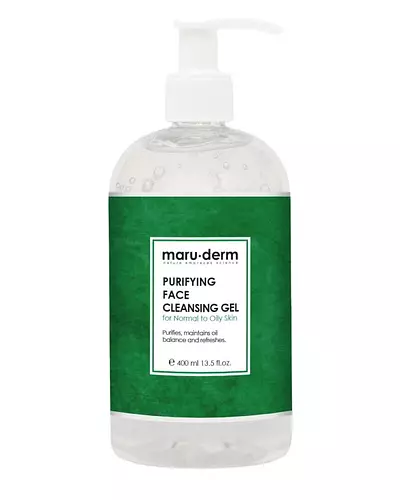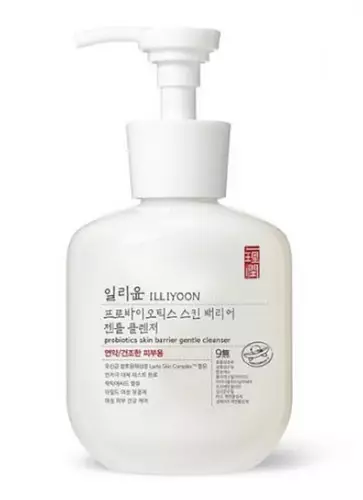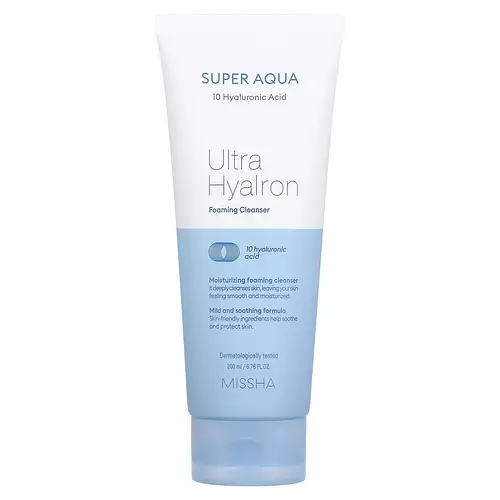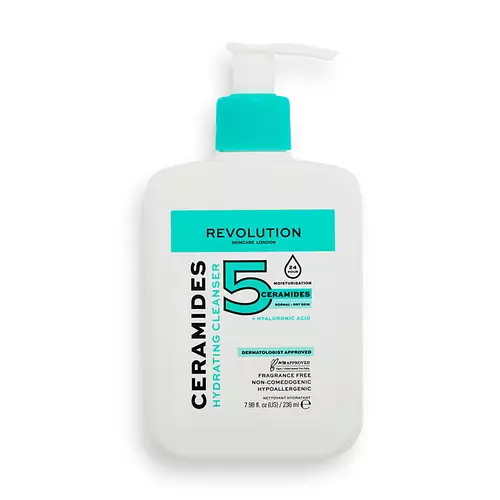Updated on May 21, 2024
Overview
Cool Features
They both contain hyaluronic acid and niacinamide
Suited For
They're both likely to be good for fighting acne, anti aging, dry skin, brightening skin, oily skin, reducing pores and dark spots
Free From
They both do not contain any harsh alcohols, common allergens, fragrances, oils, silicones or sulfates
We independently verify ingredients, and our claims are backed by peer-reviewed research. Spot a product that needs an update? Let us know.
Ingredient Info
COSRX Low pH Goodnight Soft Peeling Gel 26 ingredients
CeraVe Foaming Facial Cleanser 24 ingredients
At a glance
Click on any of the items below to learn more
COSRX Low pH Goodnight Soft Peeling Gel 26 ingredients
CeraVe Foaming Facial Cleanser 24 ingredients
Notable Ingredients
This product contains 1 ingredient that may have this attribute:
This product contains 1 ingredient that may have this attribute:
This product contains 1 ingredient that may have this attribute:
This product contains 3 ingredients that may have this attribute:
Benefits
This product contains 1 ingredient that may have this attribute:
This product contains 1 ingredient that may have this attribute:
This product contains 1 ingredient that may have this attribute:
This product contains 1 ingredient that may have this attribute:
This product contains 1 ingredient that may have this attribute:
This product contains 1 ingredient that may have this attribute:
This product contains 1 ingredient that may have this attribute:
This product contains 1 ingredient that may have this attribute:
This product contains 1 ingredient that may have this attribute:
This product contains 3 ingredients that may have this attribute:
Concerns
This product contains 1 ingredient that may have this attribute:
Notable Ingredients
This product contains 1 ingredient that may have this attribute:
This product contains 3 ingredients that may have this attribute:
This product contains 1 ingredient that may have this attribute:
Benefits
This product contains 5 ingredients that may have this attribute:
This product contains 1 ingredient that may have this attribute:
This product contains 5 ingredients that may have this attribute:
This product contains 3 ingredients that may have this attribute:
This product contains 1 ingredient that may have this attribute:
This product contains 3 ingredients that may have this attribute:
This product contains 1 ingredient that may have this attribute:
This product contains 1 ingredient that may have this attribute:
This product contains 2 ingredients that may have this attribute:
Concerns
This product contains 2 ingredients that may have this attribute:
This product contains 1 ingredient that may have this attribute:
This product contains 1 ingredient that may have this attribute:
This product contains 2 ingredients that may have this attribute:
Ingredients Side-by-side
Ingredients Explained
These ingredients are found in both products.
Ingredients higher up in an ingredient list are typically present in a larger amount.
Water. It's the most common cosmetic ingredient of all. You'll usually see it at the top of ingredient lists, meaning that it makes up the largest part of the product.
So why is it so popular? Water most often acts as a solvent - this means that it helps dissolve other ingredients into the formulation.
You'll also recognize water as that liquid we all need to stay alive. Talk about multi-purpose! If you see this, drink a glass of water. Stay hydrated!
Learn more about WaterGlycerin is already naturally found in your skin. It helps moisturize and protect your skin.
A study from 2016 found glycerin to be more effective as a humectant than AHAs and hyaluronic acid.
As a humectant, it helps the skin stay hydrated by pulling moisture to your skin. The low molecular weight of glycerin allows it to pull moisture into the deeper layers of your skin.
Hydrated skin improves your skin barrier; Your skin barrier helps protect against irritants and bacteria.
Glycerin has also been found to have antimicrobial and antiviral properties. Due to these properties, glycerin is often used in wound and burn treatments.
In cosmetics, glycerin is usually derived from plants such as soybean or palm. However, it can also be sourced from animals, such as tallow or animal fat.
This ingredient is organic, colorless, odorless, and non-toxic.
Glycerin is the name for this ingredient in American English. British English uses Glycerol/Glycerine.
Learn more about GlycerinNiacinamide has emerged as an all-star ingredient due to its many benefits.
It is known to treat acne by reducing inflammation. It also helps fade dark-spots and strengthen the skin by promoting the growth of the ceramide barrier.
Other benefits include smoothing wrinkles and minimizing redness.
The cherry on top? Niacinamide can also help build keratin, a protein that keeps skin firm.
When incorporating niacinamide into your routine, look out for concentration amounts. Typically, 5% niacinamide provides benefits such as fading dark spots. However, if you have sensitive skin, it is better to begin with a smaller concentration.
Niacinamide can be mixed with other ingredients to boost benefits. For instance, it has shown to be effective when used with copper, folic acid, and zinc to treat acne.
Learn more about NiacinamideDisodium EDTA plays a role in making products more stable by aiding other preservatives.
It is a chelating agent, meaning it neutralizes metal ions that may be found in a product.
Disodium EDTA is a salt of edetic acid and is found to be safe in cosmetic ingredients.
Learn more about Disodium EDTAHydrolyzed Hyaluronic Acid is a form of hyaluronic acid. It is created by the hydrolysis of hyaluronic acid with a high molecular weight. Once created, Hydrolyzed Hyaluronic Acid has a low molecular weight.
Low molecular weight HA has been shown to hydrate and increase elasticity of the skin. Increasing elasticity is also associated with reduction of wrinkle depth.
One study found topical low molecular weight hyaluronic acid may be considered for the treatment of rosacea in the adult population. However, we always recommend speaking with a professional about your skin concerns.
Hyaluronic acids are a humectant. This means they draw moisture from the air. Hyaluronic acids help moisturize, soothe, and protect the skin.
Read more about other common forms of hyaluronic acid:
Learn more about Hydrolyzed Hyaluronic AcidIngredient Ratings
Here's what our community thinks of the ingredients in these two products.
When to use
COSRX Low pH Goodnight Soft Peeling Gel 26 ingredients
CeraVe Foaming Facial Cleanser 24 ingredients


Reviews
Here's what our community thinks
COSRX Low pH Goodnight Soft Peeling Gel 26 ingredients
tttende
10/10
Love it, will repurchase. Despite its name, I use it in the morning. Leaves my skin feeling fresh without irritation (you don't need much...
10/10
Love it, will repurchase. Despite its name, I use it in the morning. Leaves my skin feeling fresh without irritation (you don't need much product). Has no smell.
I was aware of their 'Good Morning' cleanser which seemed a little bit stripping for my sensitive skin based on their ingredient list, so I decided to try this Pha version instead. And I'm so glad I did! It helps me gently exfoliate on a daily basis without stripping my face, as my pores tend to clog.
✦ Price: Pretty reasonable for me considering that I use this product every two days plus I always buy it on sale
✦ Lasts about 5 months
princessmelody2010
If you're struggling with any types of acne and pimples, use this! This works so well with my combo skin! I swear, this product gave me that...
If you're struggling with any types of acne and pimples, use this! This works so well with my combo skin! I swear, this product gave me that hydrated skin.
CeraVe Foaming Facial Cleanser 24 ingredients
Mirq
Love hate relationship
I’ve been using it almost for year. It clears my skin and it doesn’t break me out but I think it’s too drying for me. I...
Love hate relationship
I’ve been using it almost for year. It clears my skin and it doesn’t break me out but I think it’s too drying for me. I have sensitive combo skin and every time I use my skin feels slightly tight. The reason I was using it for soo long is because I didn’t realised that tight feeling wasn’t normal. So maybe it’s better for more oily skin.
dhochuli
Every teen struggling with acne needs this!
This is the product that helped me get through my horrible acne breakouts. It’s the one cleanser I...
Every teen struggling with acne needs this!
This is the product that helped me get through my horrible acne breakouts. It’s the one cleanser I recommend to my younger clients.










